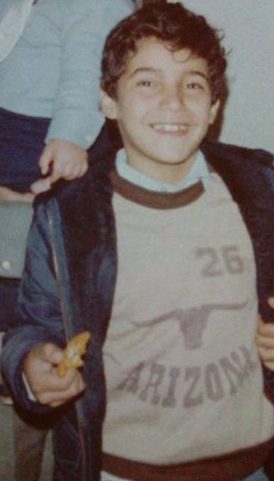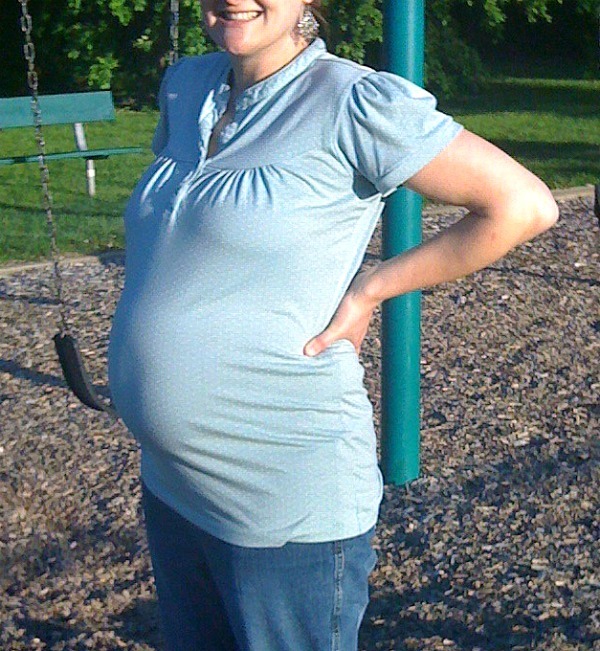Ever wonder how you can build financial independence if you’re not a super saver, maybe spend a little too much going out to eat, or like to go on vacation?
This is the story of how two Average Joes (or, one average Joe and one average Jane) have created financial security without being big savers, super frugal, or mega income earners (and still go out to eat and take vacations).
Persistence, My Friends
The thing that strikes me as the years go by, and my husband and I continue to hold onto some big financial goals, is that despite all of the cumulative setbacks that we have, despite many mistakes, despite overspending in some areas, and despite doing things that are big financial no-nos, such as taking out a car loan, we will have gone from $40,000 in debt to financial independence (or very close) in just eleven years.
Setting a goal and sticking with it is more important than all the mistakes that you’ll make along the way. It’s really true that persistence is the key to winning financially. If you mess up, it’s more important to recalibrate and get back on course. What matters the most is continuing to work toward financial independence however many mistakes you make along the way, because as you get better at this financial stuff, the little mistakes matter less and less.
Our Story
This is the story of how Mr. ThreeYear and I made a ton of financial mistakes, had several big setbacks, and have still managed to make fine progress on the road toward financial independence. We made all the typical mistakes (plus more!) and have still managed to get out of debt and totally transform our financial situation.

The Sweet Beginnings
Mr. ThreeYear and I met in Santiago, Chile. Although this wasn’t an average place to meet (if you’re in the US, anyway), we made up for it with lots of average bad money spending in our dating years. We got engaged and married there, and rented a nice apartment in a good section of the city. During the evenings, we’d dine out on sushi and hit up Happy Hours after work. We took lots of weekend vacations to the beach or other fancy places. I bought tons of clothes—extra expensive in Santiago, where not as many clothes are imported. For me, my goal was not to overspend the money in the bank, but not to save any of it, either.
The first clue I had that Mr. ThreeYear and I had different financial habits was that he insisted on saving up his money before he bought a car in cash. I remember being incredulous that he was saving cash for the car, “But that will take forever! Why don’t you just take out a car loan?”

Hubs’s Story
Mr. ThreeYear had grown up very poor, and his family never took on debt. At that time in Chile (1970s and 1980s) it was very difficult to take out a consumer loans, so no one did it (how that has changed!). My in-laws owned their house outright (it was right next door to my mother-in-law’s parents, and the land had been given to them as a wedding gift). They did take out a mortgage on an apartment in the city center when they decided to move out of their house, which turned out to be a prescient decision, because that apartment has been a source of income now for nigh 45 years.
In the end, they didn’t end up moving, and rented out that apartment, paying off that mortgage as quickly as they could. They only bought what they could afford, and they couldn’t afford much. Christmas presents were socks and underwear. They heated the house with wood from a local furniture factory. They didn’t own a car or a color television for decades. So my husband grew up with more delayed gratification than practically anyone I’ve ever met.
My Story
I, on the other hand, grew up in a house where the philosophy was more “Carpe Diem!” My dad also grew up poor, because his own father went back to college and med school when he was eight. He was determined to have enough money when he was older that he didn’t have to wear patched up jeans. When he finished residency, he went into practice with his dad (my grandfather, a GP) and he developed this “carpe diem” philosophy in the back of that office.
Many of my grandfather’s patients were elderly. Dad would talk to lots of them who told him, “I’m retired. My wife and I waited our whole lives to travel in retirement, but now we can’t, because I’m too sick.” Those conversations made him convinced that he needed to adopt a “do it now” money attitude. Along with that, came an incredible generosity to family, friends, and community. But frugality and delayed financial gratification were scoffed at in my house (luckily, now things have changed). So when I grew up, I took a lot of those ideas sub-consciously to heart. “I want it! If the money’s in my bank account, I should have it! Let’s buy cars on credit!” etc.
So what did this powder keg of different financial philosophies produce? Let’s continue the story…
High Times in Santiago
We lived in Santiago for three years, and although we put a down payment on an apartment there before we left, and saved the minimum required for retirement (Chile requires you to save 7% of your salary, which it manages for you in a sort of nationalized mutual fund), we left the country with only about $15,000 and no real retirement savings to speak of (that 7% is still hanging out there, in an account in Chile somewhere, until we can figure out how to claim it).

Moving in with the ‘Rents
When we moved to the US, without jobs, cars or furniture (sold in Santiago), or much in the way of savings, we moved in with my parents while we looked for jobs. I had a car, a gift from my parents during college, but Mr. ThreeYear needed transportation. So my dad gave him a car! How incredibly generous. But, we stupidly sold that car, a 1989 Suburban (classic!), took the money, and bought a nicer car–a used Jeep Cherokee. Foolish, foolish young ThreeYears. (At least that purchase was made in cash).
After two months, Mr. ThreeYear found an excellent job in Atlanta, so we moved into a moderately priced apartment (it was $750 for about 1100 square feet), only a mile from his job. Ok, so far, so good. We didn’t buy any furniture. Instead, we used a bunch of furniture I’d bought at Goodwill during college, and some old furniture my parents gave us. Was it a stylish, perfectly matched apartment? No, but it didn’t cost anything to furnish, and we had tables to eat at, sofas to sit on, and beds to sleep on.
I spent the next few months looking for jobs. For some reason, I had an incredibly difficult time finding a job. I ended up working at a temp agency, in the agency itself. Then I had the bright idea to offer myself up for free employment. I decided I really wanted to work at an ad agency, so I called a bunch of agencies to see if they were hiring interns. I had some interviews, and finally found an agency that agreed to hire me as an intern, for something like $200 a month (plus free parking).
That agency hired me within three months for a full-time position, and my husband and I officially became DINKS. And here is where our story takes a turn for the worse—where some not-so-dumb financial decisions become really dumb financial decisions. I convinced my financially conservative husband to start making bad financial decisions. Over the next year, we fell into traps that countless DINKS fall into.

Money Mistake #1: Not Saving Early
“We have so much money, we’re rich! Let’s spend it all!” Ok, that wasn’t exactly our philosophy, but we went out to eat a lot, bought fancy new electronics, and racked up a ton of credit card debt. As I write this, I think, “on what? We hardly had any expenses!?” We had two paid-for cars, a furnished apartment with affordable rent, only two mouths to feed, and no debt! Both of us had graduated with college with no student loans—I got a scholarship with my generous parents paying the rest, and Hubs’s mom paid his undergrad with him paying graduate school (college in Chile is a lot more affordable than in the States).
Money, Money, Money!
For about a year, we spent with wild abandon and saved a bare minimum for retirement. Finally, we wised up, and started putting 25% of our salaries into Hubs’s 401K and an IRA for me. We had so much money that we didn’t even feel the difference. In fact, we could have saved a lot more, but at the time, we didn’t know any better. All the conventional wisdom told us to save 10-20% of our salaries (and we thought “we’re saving more than average! Aren’t we smart?”).
Then, it was 2006, and everywhere we turned, we heard how smart it was to buy a house. Flip This House was still a show on HGTV, and it was conventionally accepted wisdom to buy a house, sell it for a profit, and upgrade. Again. And again. I mean, you were basically a moron if your house didn’t turn you a profit in 2 years. So for us it was on to…
Mistake #2: Buy High, Sell Low

We bought a lovely 30-year-old house in a nice neighborhood in Atlanta, Georgia. Little did we know that we bought our house in the most expensive market in a century. (We kept telling people, “We got such a good deal!” and wondered why they looked at us so strangely). We put five percent down. While we bought less house than we could afford, which turned out to be a very good decision, in hindsight we were not ready to buy a home if we only had a 5% down payment (which could easily have been larger but for Mistake #1!). So we had a house with two mortgages: one was a 30-year fixed, and the other was a balloon mortgage that was essentially interest-only, we paid so little on it up front.
We lived in the house for four years before we moved, and sold at the worst market to sell a house in a century. (Couldn’t have planned that worse had we tried!). There was negative equity in the house, so we actually had to pay when we sold it (more on that, later).
Mistake #3: The Car Loan
In 2006, I got pregnant with Little ThreeYear.

We decided, for some reason, that my trusty, reliable eight-year-old car (a low-slung sporty Acura Integra hatchback), would not be an appropriate baby car (ok, perhaps not). What we thought I needed was a …BMW SUV! Yes, that is right. We bought a BMW X5 in preparation for the baby, instead of a sturdy, late model gas sipper like an Accord. Luckily, it was used, but even after trading in my old car, we still owed $10,000 on a car loan. But like most average Joes out there, we bought it with the nebulous assumption that things would keep getting better for us, that our salaries would keep increasing and it would be easy to pay this loan off.
Mistake #4: The Failure to Plan
As my pregnancy progressed, we continued to live the Average Joe life—we had credit card debt, we weren’t putting money aside for when the baby was born, and we weren’t planning ahead for how life with a newborn would work. In short, we were average DINKS making average financial mistakes that could have added up to a lifetime of financial instability. I didn’t like my job at the time, but I didn’t sit down and think through what would happen when Jr. was born. My optimistic nature blinded me to the hard realities of life with a newborn, especially as a working mom who doesn’t like her job.

In June of 2007, we had our first son. Soon after, I realized I was not going back to a job that was unsatisfying, and I told Mr. ThreeYear I wanted to stay home. He valiantly agreed, even though that meant we lost COMPLETELY PAID-IN-FULL HEALTH INSURANCE for my whole family AND our income decreased by 45%. (Again, as I’m typing this, I want to be able to whack my past self on the head!).
I’m not knocking stay-at-home moms, and I certainly don’t regret my decision to spend the first years of my sons’ life with them, but dang—I could have planned a little better!
While we had saved some money for retirement at that point, we had made so many other financial mistakes, it almost felt hopeless.
The Turnaround
A big crisis brought a cold, fast dash of reality to our family. At the beginning of 2008, in the midst of the financial crisis, my husband was laid off. Our son was seven months old and his was our only income. We had practically no savings. Because he is amazing, he was able to get another job exactly one month later, with a 20% pay increase, but living with that uncertainty was a huge wake up call for both of us.
On July 4th of 2008, a date I’ll never forget, I was at our local Barnes & Noble store and I headed to the financial section, where I always liked to peruse. I picked up a copy of Total Money Makeover and started devouring it there in the store. This was the clearest how-to guide I’d ever seen for getting out of debt, which was exactly what we needed to do. This was the beginning of making less average money mistakes and more wise financial decisions.
Stay Tuned for Part 2 of: The Story of How Two Average Joes Got Out of Debt and Got on the Road to Financial Independence.



